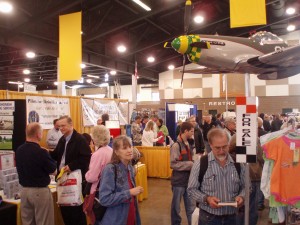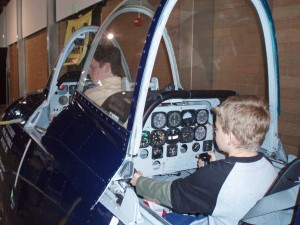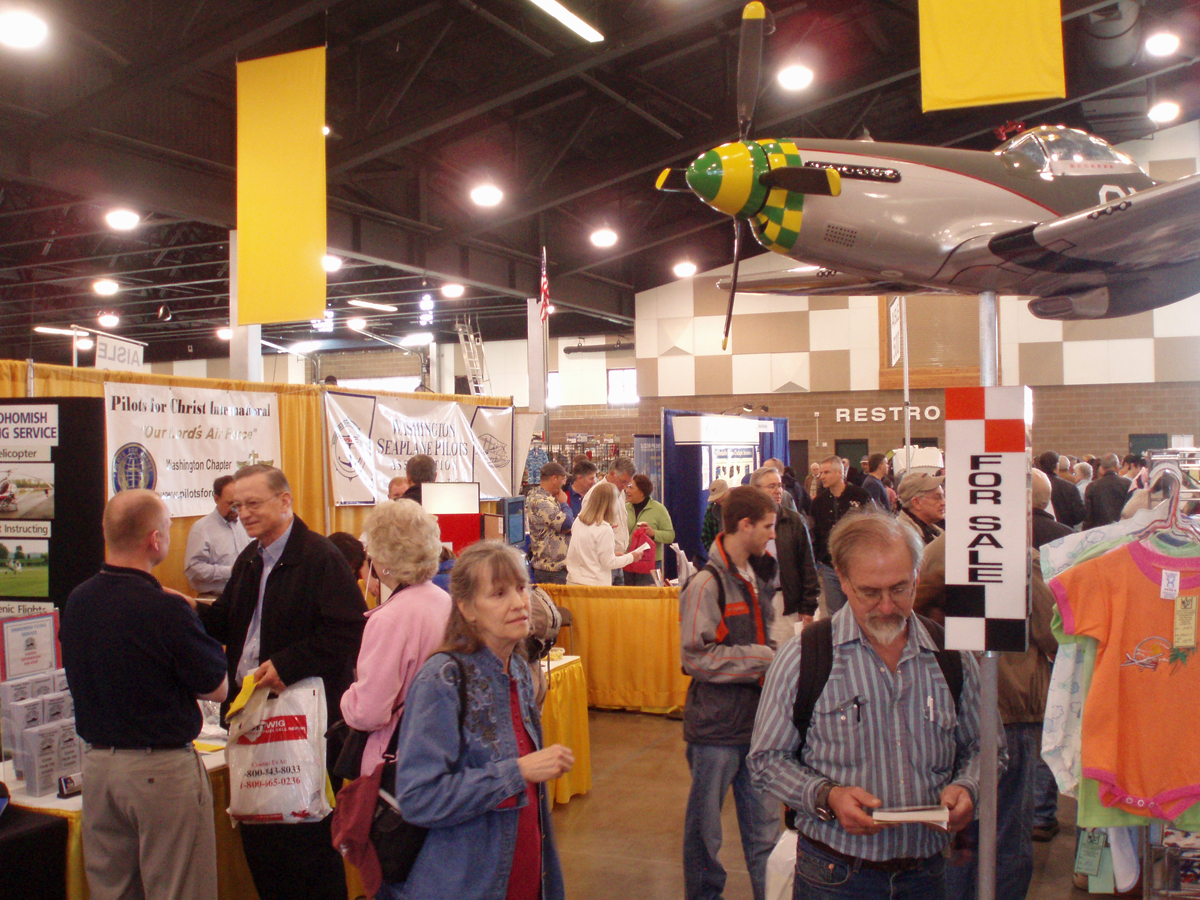
More than 12,000 people attended the 25th annual Northwest Aviation Conference this year, with a program that included 350 exhibitors and a full roster of aviation presentations by AOPA President Phil Boyer and others.
By Terry Stephens
This year’s 25th annual Northwest Aviation Conference & Trade Show attracted more than 12,000 aviation enthusiasts, according to Rachel Hansen, spokesperson for the Washington Aviation Association that sponsors the event. More than 350 exhibitors registered, compared to 220 last year.
During his 18th consecutive appearance at the annual event, Aircraft Owners and Pilots Association President Phil Boyer again rated the lurking issue of federal user fees as a major threat for the country’s general aviation industry.
The Federal Aviation Administration’s vision of user fees and higher fuel taxes for GA didn’t make it through Congress in the FAA Reauthorization Act of 2007, except for a $25 per flight air traffic modernization surcharge on turbine-powered aircraft owners and pilots. Boyer credited AOPA’s opposition campaign in Congress for the slight gain made by the FAA.
The FAA and Department of Transportation want user fees on GA that would charge pilots directly for FAA services, he said. The airlines also want to shift costs for supporting the FAA onto GA and the Bush administration wants GA user fees to free tax revenue for non-aviation uses, the AOPA contends.
General aviation interest groups, on the other hand, want to maintain an active, growing aviation industry that serves all citizens, not just wealthy ones, according to Boyer. He said he expects to see the user fee issue raised again in future legislation.

Gliders displayed by NorthWest Eagle Soaring from Arlington Airport attracted crowds fascinated by the giant wingspan and high-tech instrument panel of the DG-1000, flown by William Lynn Weller, owner of the business.
“We have big enemies in the FAA, the airlines, the Bush administration and in Congress,” Boyer told a crowd of 700 attendees at the Puyallup, Wash., fairgrounds event. “Yet, we have allies, too, including 55 to 60 members of the U.S. Senate who are pilots and many members of the House of Representatives who fly.
“Out here in the Northwest, you didn’t see any of the airline commercials promoting user fees, but inside the beltway they were all over. They were part of a campaign by the Air Transport Association and its 18 airline members to shift costs of solving congestion and modernizing the nation’s air traffic control system to general aviation, as well as business flying.”
AOPA began promoting its own education program, he said, focusing on myth busting.
“The myth being put out there by the airlines is that it’s all those general aviation aircraft causing the congestion and traffic control problems,” he said. “Actually, GA is only four percent of the air traffic at the 10 most congested airports. Nobody in their right mind wants to fly their small plane into those airports when they can get into other airports.”
Boyer said airlines schedule more flights than suits airport capacity. He added that 25 percent of delays have proven to be the airlines’ fault and 70 percent are due to weather conditions.
Top 5 fatal flying mistakes
A standing-room-only crowd of more than 350 people gathered for the AOPA Air Safety Foundation’s humorous, yet serious and fast-paced presentation by Pat Shaub on “The Top 5 Fatal Mistakes Pilots Make.”
Explaining why pilot error causes three-quarters of all fatal accidents, Shaub said most of the reasons are the same mistakes pilots have been making for decades.
“There is no level of skill that can’t be overcome by poor judgment,” he said, opening his program with an air show video showing a restored World War II British Spitfire going into a loop too close to the ground, with obvious results as he closed the loop.
Out of 241 fatal accidents in 2005, reasons other than the top five mistakes caused only 51, he said.

Young and old lined up for the opportunity to sit in the cockpit of this T-28 Trojan, part of the Olympic Flight Museum’s promotion for its “Gathering of Warbirds” air show in Olympia Father’s Day weekend, June 14-15.
“Thirty-three percent of all fatal accidents are caused by stupid pilot tricks, such as acrobatic stunts, even over subdivisions; one pilot hit a house and killed a 17-year-old in his bedroom,” he said. “GA pilots are just not good at all this. If you want to fly that way, do it with an acrobatic instructor in an aircraft rated for acrobatics.”
Ignoring bad weather was attributed to 14 percent of GA fatalities that year, including thunderstorms, icing and turbulence, he said. Takeoff errors accounted for 13 percent of deadly accidents, including taking off at a too-high angle of attack, stalling, low airspeed and high engine stress.
Another area in which to exercise care is descending for landings, which accounted for 10 percent of fatalities.
“Aircraft are fragile things; don’t use them to clear trees or brush or as an excavation tool,” he warned. “Weather and maneuvering can affect your safety, too. If you have to bank more than 30 degrees to line up with the runway, just go around. If you miss a visual flight rules approach, just go around. If you miss an instrument approach, you should get one do-over. After that, go elsewhere.”
Mistake number five, he said, is running out of fuel.
“Nearly every week there are three fatal crashes due to fuel problems,” he said. “Pilots often think they have to make their trip nonstop or they want to conserve tank space for cheap gas at the next airport. Part of the problem is you get used to nearly running out and you get casual about it. Then, it happens. You do run out.”
He said to remember to plan to land with an hour’s fuel remaining and not to fly beyond your personal minimums.
“Make your hard decisions early,” he said. “Don’t listen to that devil on your shoulder. Follow your intuition. Never think it’s too much hassle to stop to refuel. When you run out, you will stop. At least by being cautious you won’t have to dig your plane out of a cornfield, or worse.”











